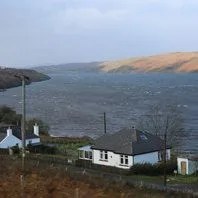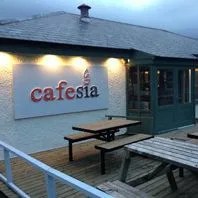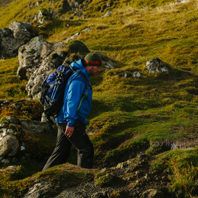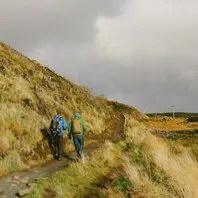The Isle of Skye is not your average island getaway. Located within the Inner Hebrides islands on the west coast of Scotland, Skye is a little bit less than half the size of Rhode Island with a population of 10,000, a tiny number of people, smaller even than what it had back in the mid 1700s. The temperature ranges from the low 30s in winter to the low 60s in summer, so if it’s warm weather and the promise of sun you want, this is not your destination. But what drew us to Skye was its remarkable landscapes, untouched coastlines and the complete absence of commercialism and overdevelopment. Indeed, driving around the island — and this is true of many places in the Highlands — the roads are only one lane; you’ve got to pull over to let other cars pass. It’s truly an escape, and in our book, one of the most beautiful places on Earth. Go there expecting to be entertained by the outdoors, the quiet and a few pints of beer.


Where to Stay
There are a lot of excellent options for overnights in Skye; the only one that’s unavailable is big-box luxury hotels. What it really comes down to is whether you plan to cater for yourself or not. In the latter case, Skye is filled with inns that range in feel from traditional and elegant (Greshornish, Eilean Iarmain) to more contemporary and boutique (Duisdale, The Glenview). Almost all of them include breakfast in the cost (that’s common in the UK) and have restaurants that are also open to the general public. Another option is to rent a house. Since we were traveling with a lot of gear we chose to spread out at a place called Ashaig House, a renovated croft house, which is basically a cottage with a piece of land attached to it. There are lots of these which you can find on Airbnb as well. The other option, weather-permitting, is to camp, and for that there are some really neat campsites like the Rubha Phoil Eco campsite on the Sleat Peninsula. Or you can just pitch a tent: the Land Reform Act of 2003, colloquially referred to as the Right to Roam, allows for universal access to land if the user does so responsibly. It’s not like the US where you’ll get shot.

Where to Eat
Scotland’s natural bounty is excellent, and with an extensive coastline and rivers cutting this way and that the seafood is especially good. That said, the food is really hit or miss, and we found that the best options were at the rustic end — fish and chips and a bowl of chowder-like Cullen skink — or at the very high end, where those superb ingredients were treated with great care. If you plan to take the ferry over from Mallaig, which is a no-brainer, stop at Jaffy’s, one of the last remaining kippering houses in the town. There you’ll want to stock up on provisions: fish and chips for the ferry ride, and then a few packages of Mallaig kippers, hot smoked salmon and pepper-smoked mackerel for eating on Skye. Skye weather calls for hot coffee, and the best place to get beans or go for a cup is Cafe Sia, which has its own roastery. While you’re exploring the northern reaches of the island, there’s a good two-birds-one-stone situation in Waternish, where you can have a couple of local brews at the Stein Inn, the oldest inn in Skye, and then dinner at nearby Loch Bay Seafood Restaurant. The Holy Grail of dining in Skye is The Three Chimneys, which just earned a Michelin star in 2014. We ate at the chef’s table in the kitchen and watched as Sconser scallops and Loch Harport oysters came in from suppliers. Then we ate them raw.


